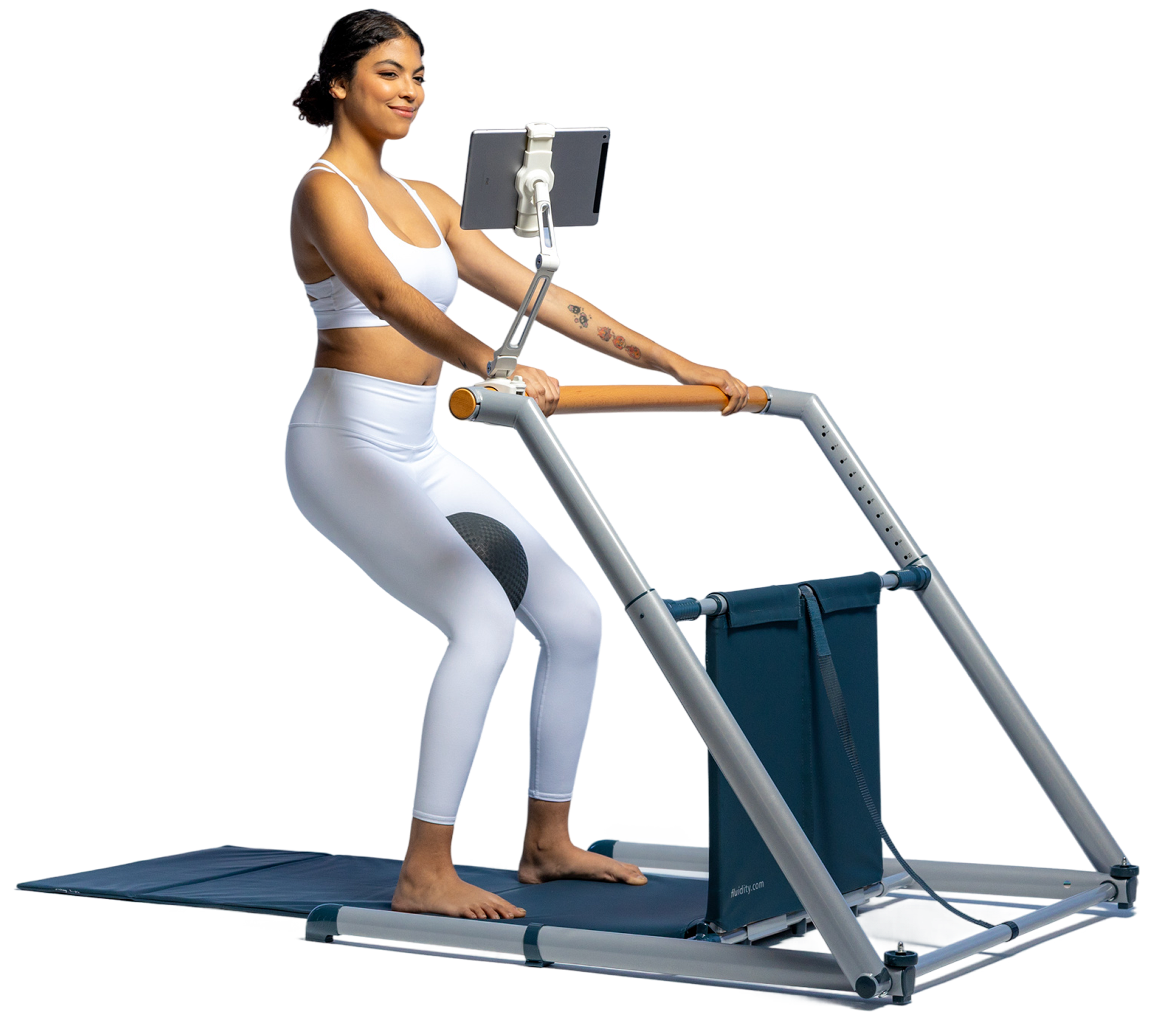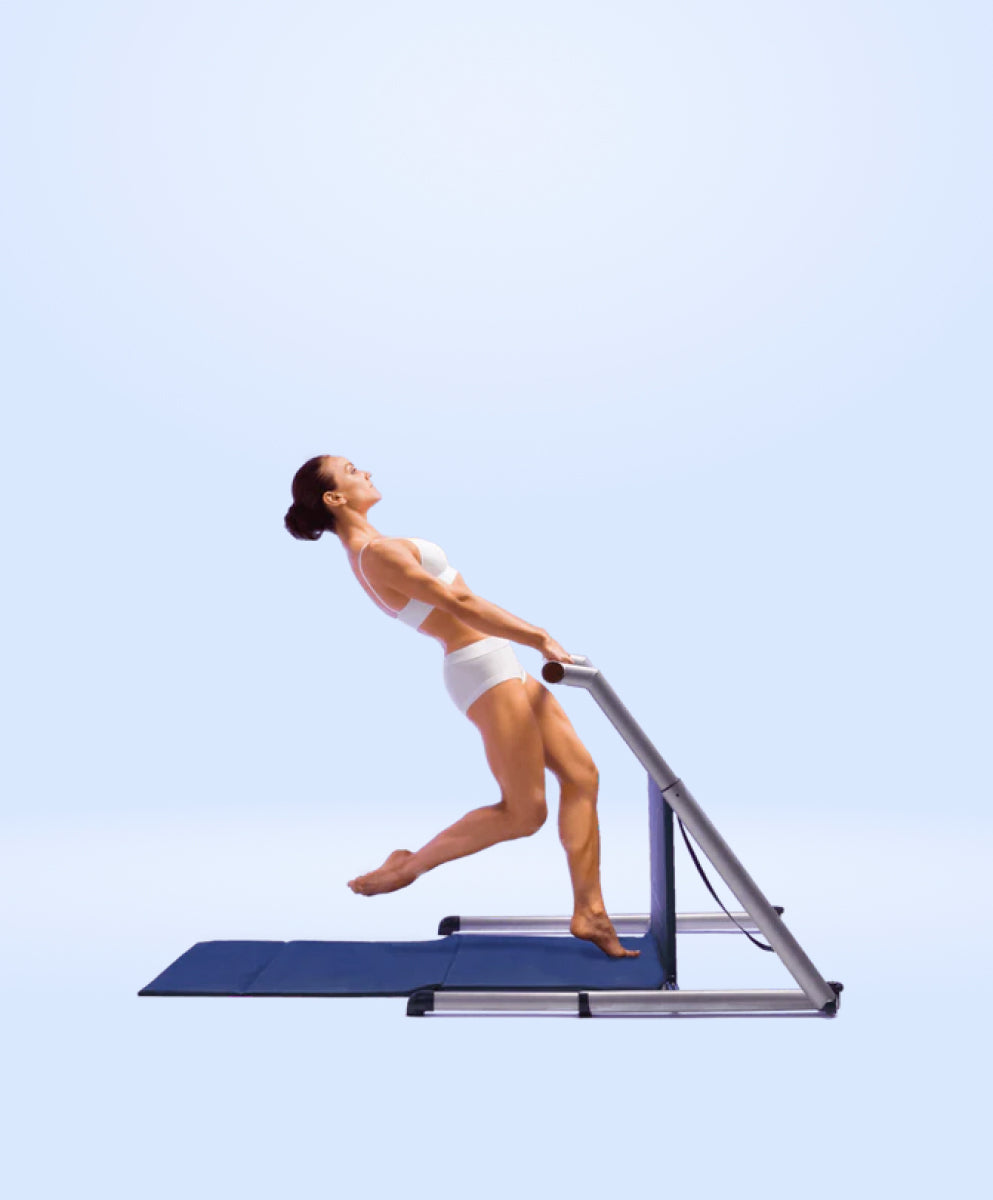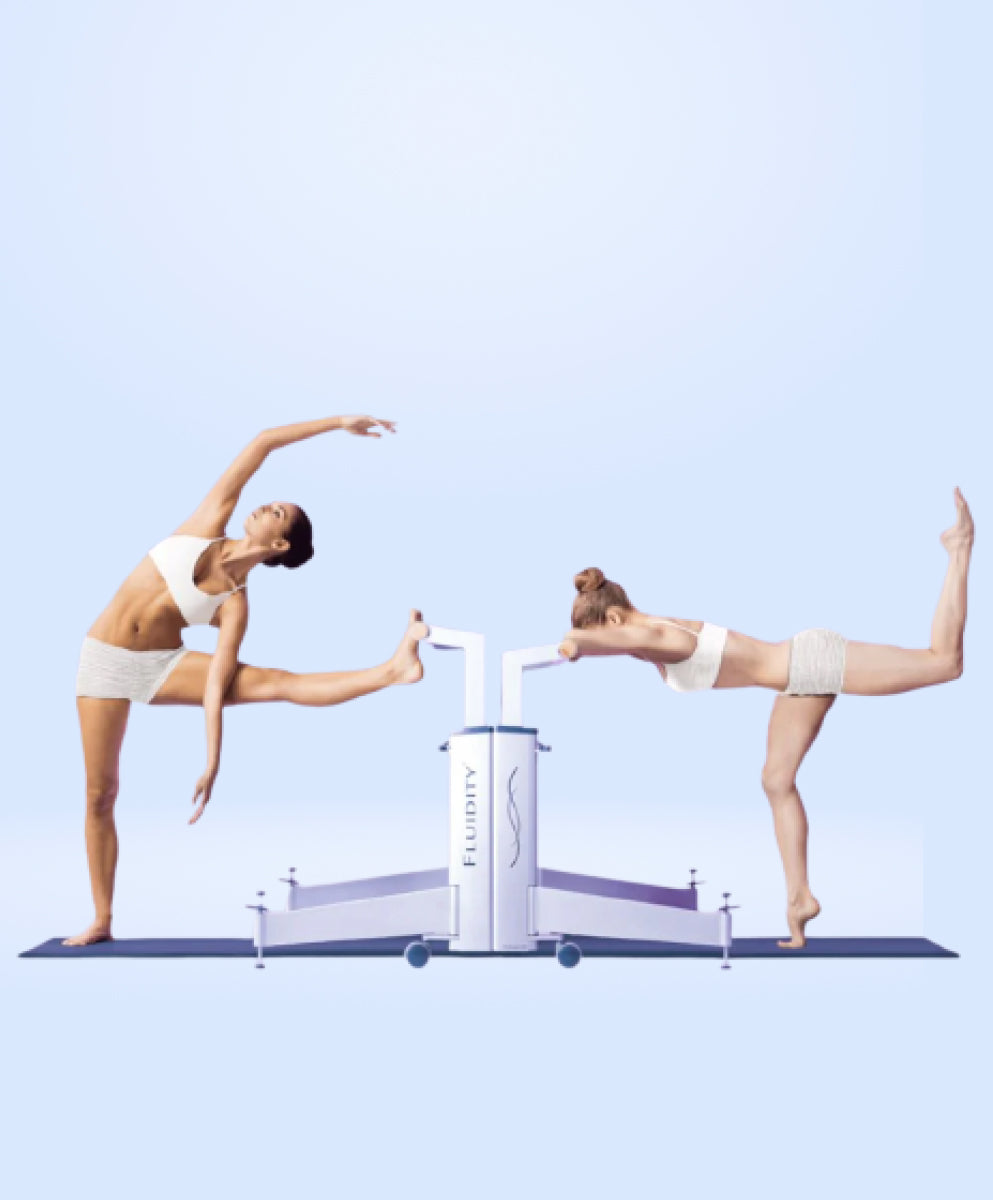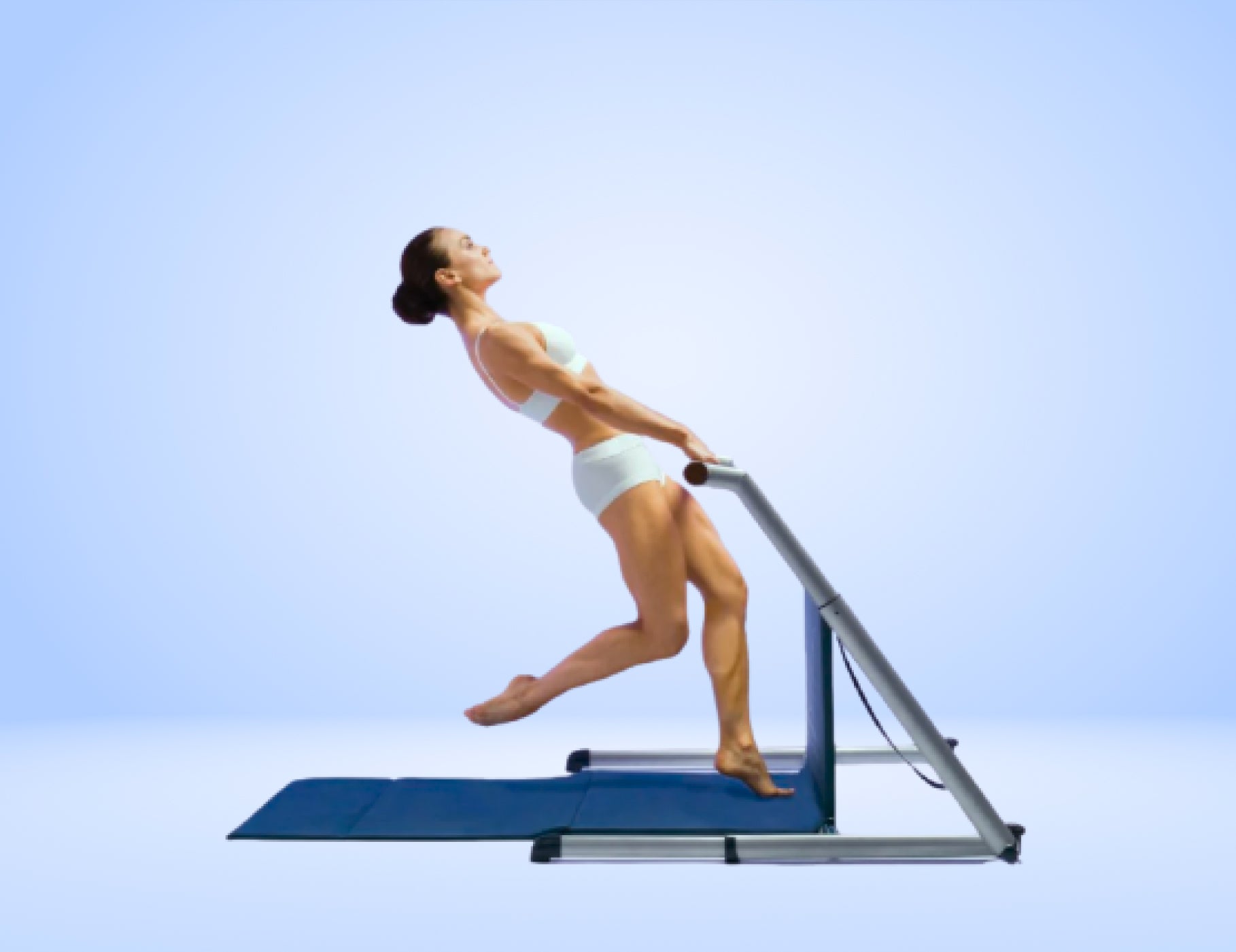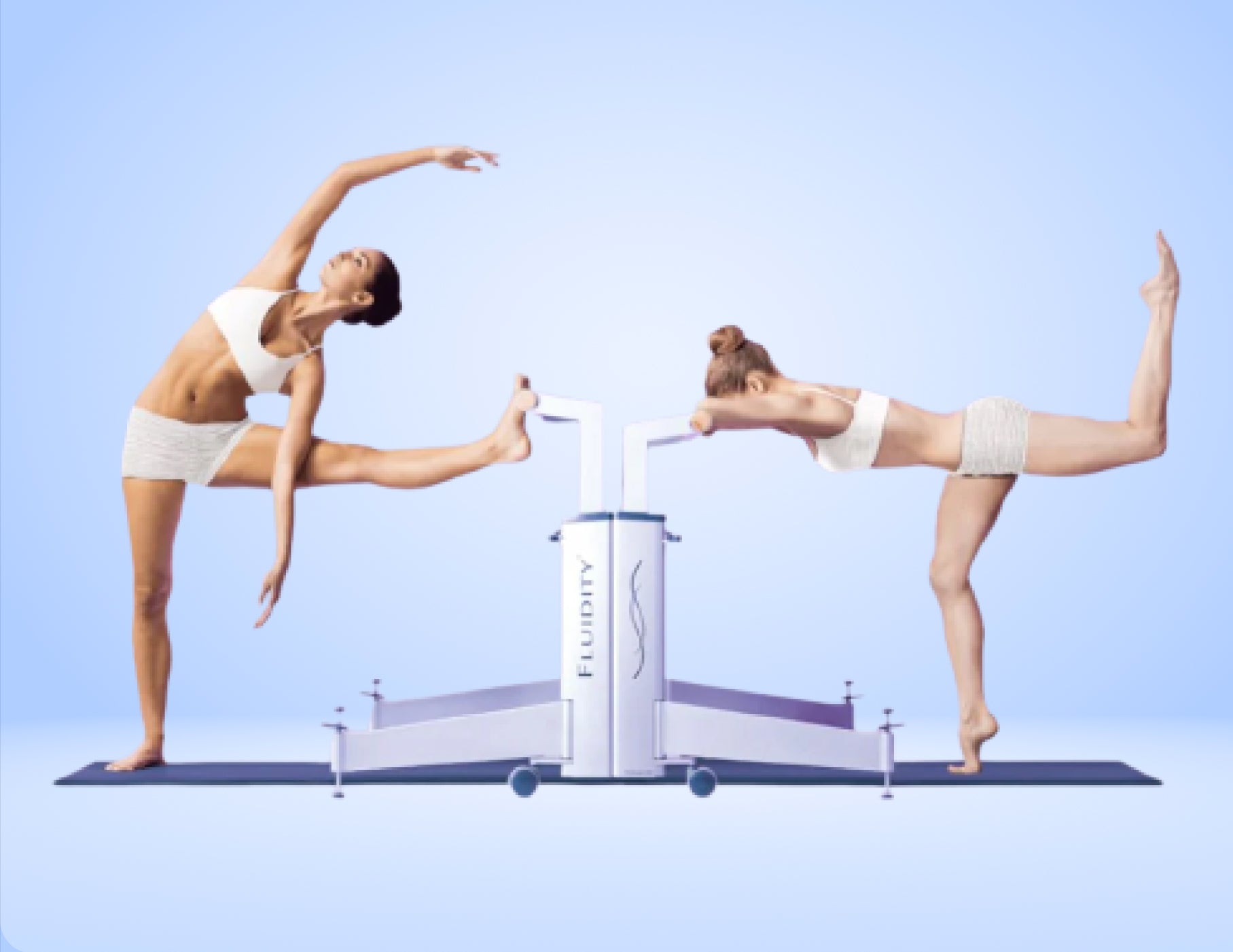How Fluidity Rx helps with Hip Pain
Explore Fluidity Rx- The hip joints are attached directly to the pelvis and the pelvic floor muscles (PFMs). An imbalance is created when people lose strength, range of motion, and coordination of the hip muscles. This leads to hip pain, joint degeneration, and total hip joint dysfunction. Fluidity Rx’s focus on training movement in the neutral pelvic position activates and reinforces the 18 muscles of the hip to perform appropriately.
- Fluidity Rx strengthens proportionately and promotes range of motion through stretching and movements which restore strong, flexible, and functional hips.

Hip Dysfunction Supported by Fluidity Rx
- Femoral acetabular impingement (FAI).
- Hip labral tear.
- Piriformis syndrome.
- Hip bursitis
- IT band pain (ITB).
- Proximal hamstring tear.
- Avoid hip surgery - Labral repair Total hip replacement Partial hip replacement
- Hip surgery recovery.
How Pelvic Tilts Lead to Hip Pain and Dysfunction
Misaligned pelvic tilts disrupt the lumbo-pelvic-hip complex’s alignment, exacerbating hip pain by altering muscle lengths, increasing strain, restricting gait, and causing joint degradation and pelvic floor and core dysfunction.
1
2
3
4
Fluidity Rx Trains Users into a Neutral Pelvis
This results in the lumbo-pelvic-hip complex resting in a neutral position for optimal function and longevity.
Your Core The Inner Unit
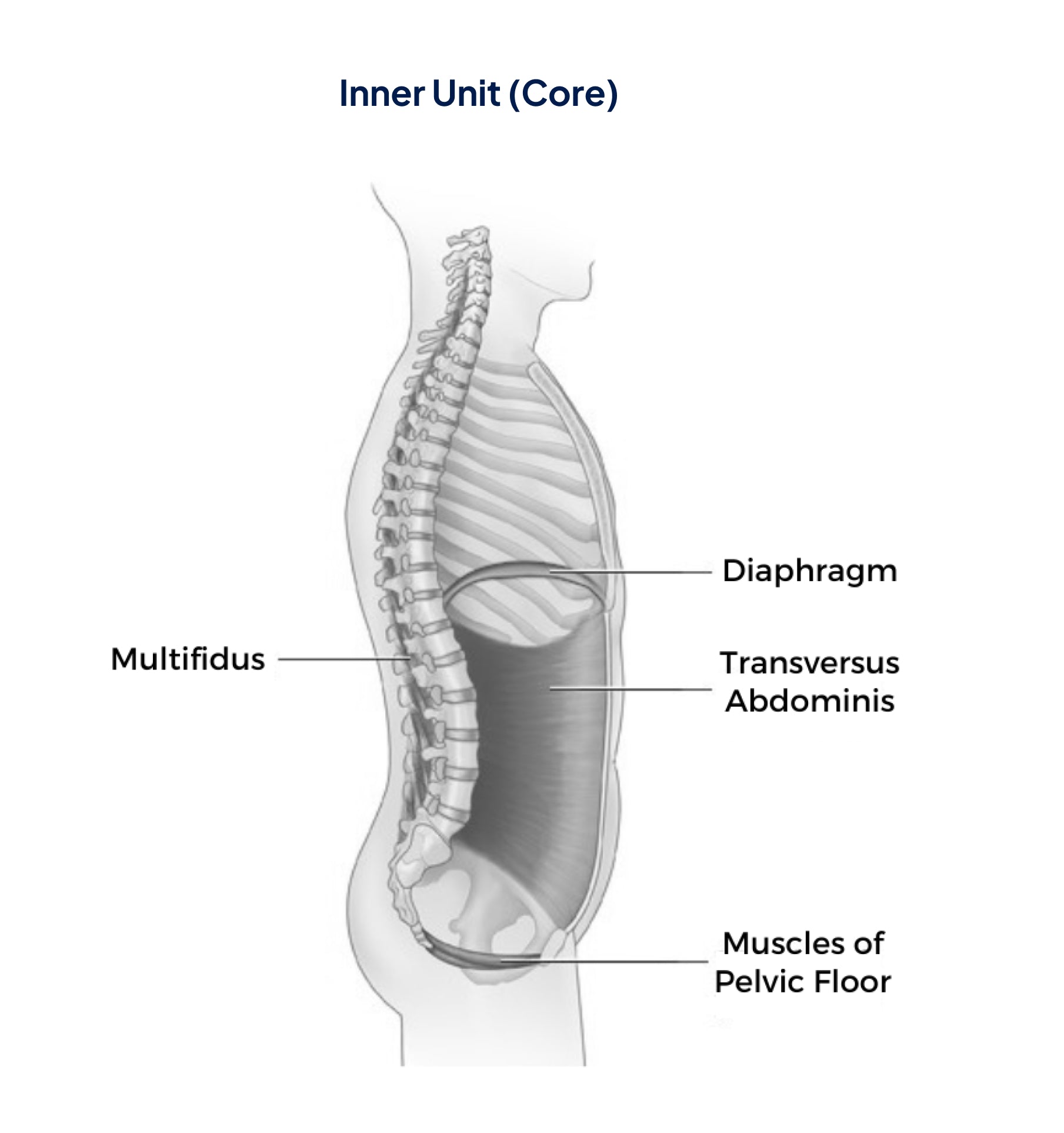
The Inner Unit automatically activates to:
- Control intra-abdominal pressure (the pressure in the abdomen between the lungs and the pelvic floor)
- Stabilize the spine and pelvis before you move your arms and/or legs during movement
When intra-abdominal pressure (IAP) is functioning optimally, It
- Helps Stabilizes the Spine and Core
- Coordinates Breathing and Movement
- Enhances Strength and Ensures Coordinated Force Distribution from the Torso to the Limbs.
- Supports Pelvic Floor and Organ Function.
- Promotes Postural Alignment

“Fluidity Rx provides the optimal method for not only pelvic floor muscle training but also to incorporate the pelvic floor muscles functionally into optimal movement patterns. Fluidity Rx training maximizes a person’s ability to modulate intra-abdominal pressure by the precise training of co-contraction of the pelvic floor with the abdominal, spine, and diaphragm muscles for inner core muscle strength.”
Dr. Cindy Neville
PT, DPT, WCS
Women with Stress Urinary Incontinence are 17 times more likely to heal if they strengthen their pelvic-floor muscles [1]
Women with Stress Urinary Incontinence are 17 times more likely to heal if they strengthen their pelvic-floor muscles [1]
